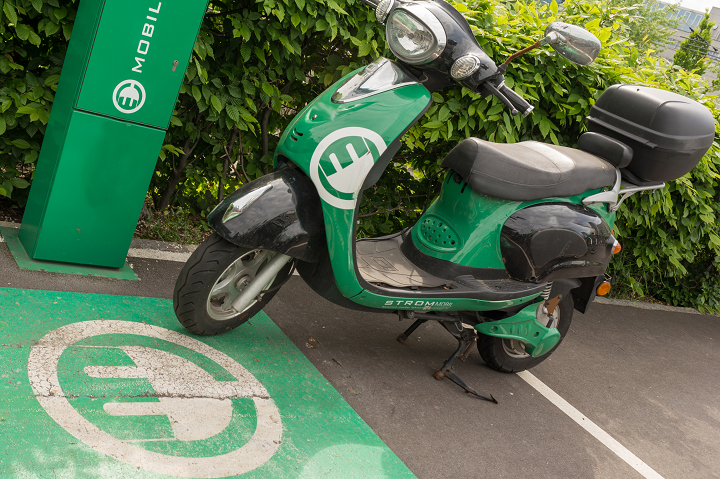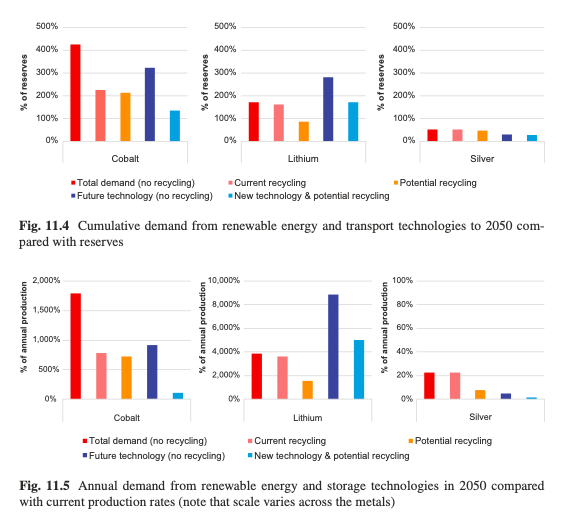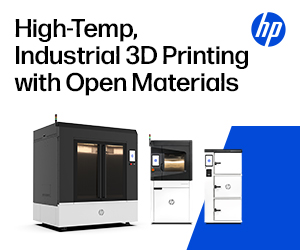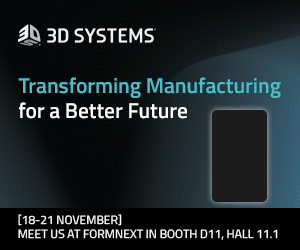To me, Bay Area firm Sakuu is one of the most exciting in the industry. In May, it announced that it would be releasing a 3D printing system for producing solid state batteries by the end of 2021. This was followed by news that it had been awarded three patents related to this technology and more. To learn more about the company and its technology, I spoke to David Pederson, Sakuu’s VP of Marketing & Business Development.
Pederson not only enlightened me as to what the company brings to the world of lithium-ion batteries, but also to the fact that its technology has applications far beyond the energy space. Though Sakuu’s multi-material multi-method (4M) technology is theoretically capable of mass-producing solid-state batteries that are one-third the weight and half the size of traditionally made counterparts. It does so by combining multiple processes in a single 3D printed layer. And it is this feature that opens the process beyond battery production.
While Pederson couldn’t give away the firm’s trade secrets, he was able to explain that Sakuu’s technique uses binder jetting to perform bulk deposition of material. This can then be coupled with something like ink-jetting to deposit metals within a layer. This means that the firm can combine multiple materials in a single build.
To do this, Sakuu has designed its platforms to be modular so that modules can be added, depending on the application. At the moment, they can combine metal jetting with ceramic binder jetting, but Pederson said that, if the company needs to build a module for photopolymerization or another type of inkjetting, it will be possible.
The alpha systems will be able to 3D print with metal, ceramics, and polymers. The company is working with strategic customers to develop the “recipes” needed for their applications. They will then be licensing the printers as a service along with the required material sets. Sakuu intends to provide in-house services to help clients bridge from prototype to full production, while also selling the systems themselves.
“In the case of somebody wants to build a product using our platform, we will, of course, help them design the material set for the platform, implement the prototyping work with them, and then provide the platforms if they want to build it themselves or work with one of our contract manufacturers to produce the products using our platforms,” Pederson said.

Sakuu’s unique new 3D printing process for solid-state batteries will unlock the mainstream adoption of EV and e-mobility vehicles by solving the previous issues of cost, performance, sustainability, and range
The first application, then, will see electrically active metals printed within ceramics to create batteries. It will mostly likely see the technology deployed at some point to produce batteries for one of its largest investors, Musashi Seimitsu. This is a publicly traded Japanese firm that manufactures motor, suspension, and steering parts for cars, motorcycles, and ATVs.
“When the founders sat down to establish Sakuu, they had over 40 years of experience in additive manufacturing, working with metals and ceramics, and they sought out to determine a challenge that could be overcome by 3D printing metals and ceramics. Five or six years ago, one of the holy grails in the industry was a solid-state battery. Everybody up to this point has been trying to make solid-state batteries in a discreet fashion—laminating materials together. As you’re trying to go for energy density, you need to make the materials ever thinner, and they become very, very difficult to handle in a manufacturing sense when you start talking about ceramics that are a hundred microns going down to 20 microns in thickness,” Pederson recounted. “Their aha moment was that, instead of trying to solve the battery problem of laminating things together incorporating liquids, it could be possible to print the electrolytes, the metals and the other materials to go with it. Our approach was to solve that problem, but solve it in a way that also gets you to industrial scale and, hence the multiple processes, so that you can not only solve the problem of printing an active device, whether it’s a battery of something else, but you can also scale it into meaningful quantities.”
I’m particularly interested in the fact that Sakuu claims that batteries made with its technology are 100% recyclable. According to a chapter on “Renewable Energy Resource Assessment” in Achieving the Paris Climate Agreement Goals, there will not be enough lithium or cobalt available to meet the production required for renewable technology demand.
“The cumulative demand for cobalt from renewable energy and transport exceeds the current reserves in all scenarios, and for lithium, the cumulative demand is exceeded in all scenarios, except the ‘potential recycling scenario,’” the authors write.
Alternative battery types, such as lithium-sulfur, may make it possible to replace the rare metal cobalt, currently associated with a supply chain ripe with war and human rights abuses. However, the authors also explain that “a shift to Li–S will increase the demand for lithium because these batteries have a higher amount of lithium.” For these reasons and more, they argue that battery recycling will become much more important for improving the supply for batteries.
The necessary recycling infrastructure is not yet developed, but, if Sakuu can do what it sets out to do, then they may play an important role in the ability to recycle the next generation of lithium batteries. Pederson explained how the process works:
“If you go back to how metals and ceramics are developed to start with: typically, metals are found inside of rocks. You break them down and extract metals from them and separate them. That’s how that the industry works today to get the product in the first place. It’s not going to be different in the future. You basically crush [the battery] down and start the cycle all over again.”
Currently, the company is still progressing with its technology. It cannot yet produce a full car battery for a Nissan Leaf, but the roadmap is designed to produce items of that size at a mass manufacturing level. When asked if Sakku is currently capable of 3D printing solid-state batteries, Pederson said:
“Let me answer that the best way I can, the platform will be able to print solid state batteries. We, we have been able to print batteries in the past. We’re not advertising the fact that we’re in the market to print batteries at the moment. We’re focused on finishing the platform that can do it. We are working in parallel with all of the battery chemistry and everything else.”
While I may be fixated on batteries, Pederson explained that there was a good reason why the firm changed its name from Keracel to Sakuu. The former emphasized the technology’s applications in the energy space, but its 4M process can do much more than print batteries. One internal application that the company is exploring, and for which it received a patent, is the 3D printing of a microreactor for the healthcare industry. With Sakuu’s PoraLyte material is capable of creating empty spaces within devices, allowing the production of channels within hermetically sealed areas within a ceramic part.
By combining ceramics and metals in a single build, it may be possible to 3D print devices as thin as 1 mm in which chemical reactions take place for such uses as single-cell analysis and tissue engineering. Pederson explained that, while the technology may not be able to achieve feature sizes fine enough for producing semiconductors, it could be useful for a wide array of larger items that conduct electricity and/or have internal channels.
The applications are really only limited to what users will dream up. Some ideas that Pederson threw out included incorporating a sensor, antenna or battery into a structural element of a device, such as a smartphone. Sensors could range from gas detectors to thermometers. While he believes that, in the near-term, solid-state batteries with built-in antennas could be possible by combining metal and ceramics with 4M technology, in the long-term, polymers could additionally be printed with the battery, enabling the production of almost entire devices.
For the full scope of Sakuu’s technology to be realized, however, it will first need to get products to market. Customers will be able to lease machines likely at the beginning of 2022. Soon after, we should see some case studies released by the company to get a better idea of just what 4M is capable of achieving.
Subscribe to Our Email Newsletter
Stay up-to-date on all the latest news from the 3D printing industry and receive information and offers from third party vendors.
Print Services
Upload your 3D Models and get them printed quickly and efficiently.
You May Also Like
AM Takes on the Heat Challenge: Join EOS, Sintavia & nTop for a Free Webinar on Thermal Management
The webinar “Optimizing Thermal Management with Additive Manufacturing”, hosted by EOS and featuring AM contract manufacturer Sintavia and AM software provider nTop, is only two days away! You can register...
Generative Machine Company Makes 5 Axis Desktop 3D Printing a Reality
Amidst many copycats, the Generative Machine Company is doing something truly innovative. This British startup is bringing to market 5 Axis Desktop Material Extrusion systems with help from software toolchain...
AMS Quotes From the Host: An Interview with 3DPrint.com’s Joris Peels
Maybe you assumed you already hear enough from Joris Peels on 3DPrint.com and the 3DPOD. Well, that’s why you should never assume! The most opinionated man in the AM industry...
A Growing Area of Interest: 3D Printed Kirigami Sensors
Kirigami is a Japanese art and craft form where paper is cut and folded into intricate shapes. Often these shapes, accordion-like, can unfold into striking new forms. Whereas origami stretches...
































